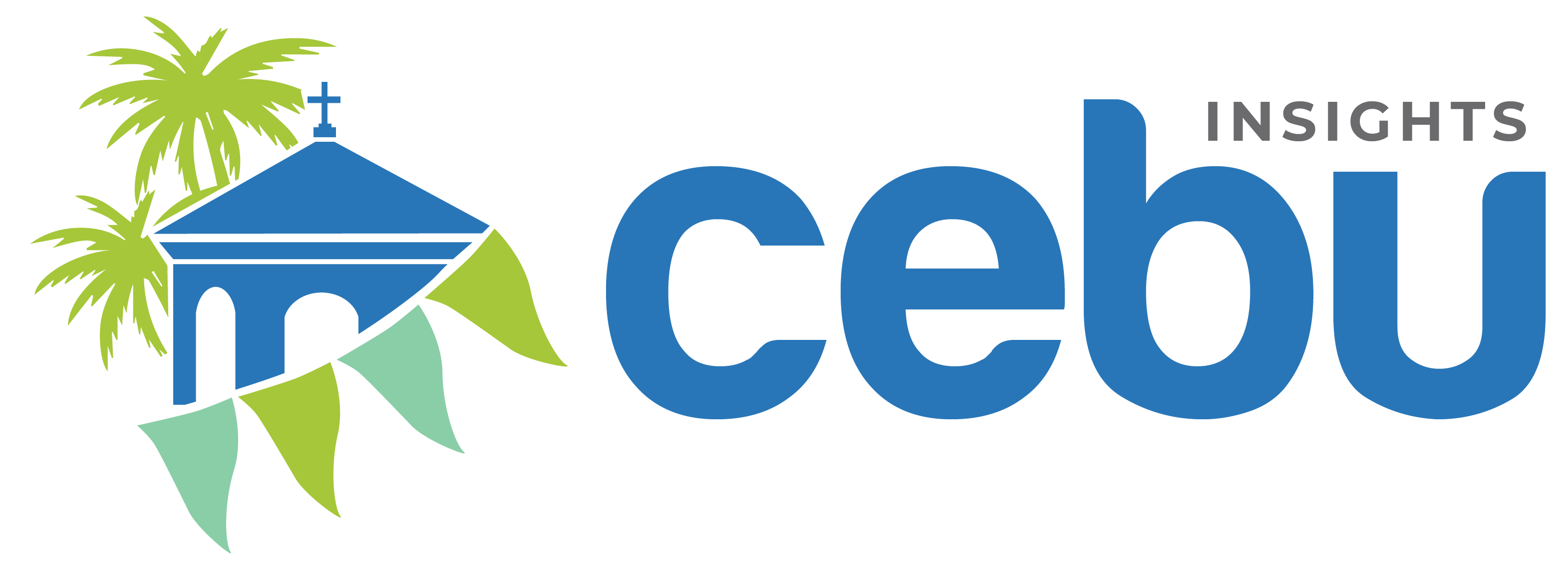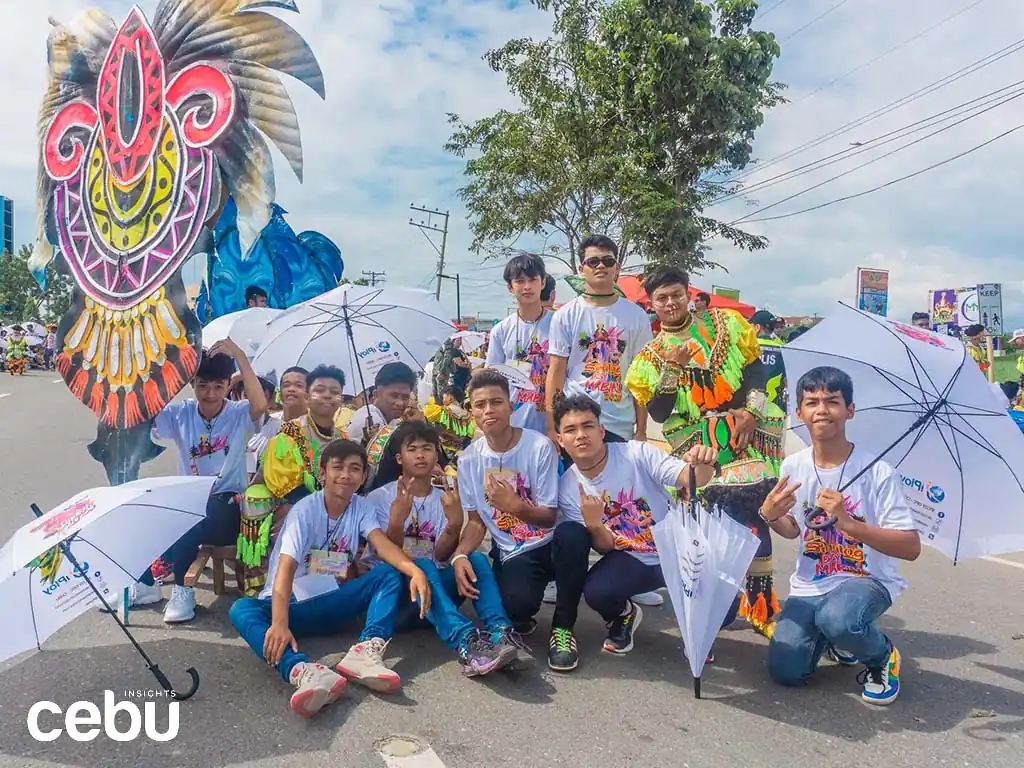The Sinulog Festival continues to attract around 2 million visitors every year.
Festivals are an iconic part of Cebuano culture and tradition. These celebrations, whether big or small, have greatly represented the vibrancy of the devoted Cebuanos, whose faith has been anchored to centuries-old beliefs.
For instance, during Sinulog week, thousands of people will gather in the church to attend mass and converge on the streets for a solemn procession.
Aside from these religious activities, festivals in Cebu are also a great source of entertainment. They boast some of the loudest, most spectacular celebrations in the country.
There’s a wide spectrum of festivals all over the different cities, municipalities, and islands. Each place has its own way of celebrating its customs, folklore, and artifacts that people give so much importance to.
So whether you’re hoping to learn more about a place or looking to have a good time, attending some of the festivals in Cebu would no doubt bring you the best experience you could ever have.
1. Sinulog Festival
Sinulog Festival is an annual cultural celebration in Cebu held every third Sunday of January.
Once the month of January begins, you’ll start to hear the locals chanting “Prititit!” and “Pit Senyor!” The streets will be filled with music and colorful displays in preparation for the famous Sinulog Festival.
This is also one of the most popular festivals in the Philippines. While the main activities are held in Cebu City, other parts of the province of Cebu host smaller versions of the Sinulog Festival.
The festival is a way for Cebuanos to honor Sto. Niño. Traditionally, religious activities last nine days. Basilica Minore del Sto. Niño hosts the mass, which is attended by hundreds and thousands of devotees. The last two days of the festival feature the festival’s most prominent religious activities.
On the eighth day, there will be a traditional fluvial procession, where the image of Sto. Niño will be transported on a flower-ornamented pump boat from Mandaue City wharf to Cebu City.
On the ninth day, you can witness and take part in two important events: Hubo Ritual Mass and the Grand Parade.
The Sinulog Festival is not only for religious activities. During the nine-day celebration, you can also watch musical acts, cultural shows, pageants, singing competitions, historical exhibits, and so on. That’s why over a million visitors and tourists flock to Cebu to experience this grand festival.
If you’re wondering how you can enjoy your experience of the Sinulog Festival, here’s what you can look forward to:
- Enjoy street parties and live bands
- Catch the Sinulog Fireworks display
- Join a tour of Cebu City
- Witness the Sinulog Grand Parade
2. Kadaugan sa Mactan Festival
The Kadaugan sa Mactan Festival honors the triumph of the historic battle in Mactan, which has become a significant part of Cebuano culture.
The Battle of Mactan left a significant mark in the history of Cebu. The defeat of Ferdinand Magellan at the hands of Chief Lapu-Lapu and his warriors freed the Cebuano people from the Spaniards.
With this, the Battle of Mactan, also known as “Kadaugan sa Mactan,” is annually re-enacted on its anniversary, April 27th, at the Mactan Shrine in Lapu-Lapu City.
Kadaugan sa Mactan Festival will kick off a week early with street dancing. During this time, you can join the food festival, in which several hotels and restaurants present themselves and offer fine food for a cheap price.
The re-enactment of the Kadaugan sa Mactan is performed by several high-profile individuals and celebrities from local networks. During the re-enactment, the three ships of Magellan are made to lead a river procession up to the beach.
The act is followed by the re-enactment of the planting of Magellan’s Cross, leading to the final act of Lapu-Lapu’s victory.
Before the main event, the Kadaugan sa Mactan Festival showcases other lively events. One of which is a three-night street party organized by the whole community.
The “Rampada sa Kalsada,” which is translated as “rampage on the streets,” is a noisy and crowded feast of entertainment stations with food kiosks and disco dancing.
Every year, Mactan island actively promotes the importance of this remarkable history that has widely impacted Cebuano culture. The celebration also shows respect for the hard-fought battle for the people’s freedom.
3. Halad Inasal Festival
No one can deny that Cebu has the most scrumptious and crispy lechon in the Philippines. Lechon in Cebu is best known for its golden-red skin and juicy, tender meat. This served as an inspiration to the people of Talisay City, who came up with the Halad Inasal Festival.
The Halad Inasal Festival features a parade of lechons, where performers will be dancing in colorful and exquisite costumes. The ritual showdown of the Halad Inasal Festival is celebrated every 15th of October to pay tribute to their patron saint, Sta. Teresa de Avila.
The first Halad Inasal Festival was held in 2005, where over a hundred roasted pigs were paraded. At the end of the parade, those roasted pigs were placed on the long tables of city hall, and the participating contingents were invited to eat the lechon.
4. Sugat Kabanhawan Festival

Sugat Kabanhawan Festival in Minglanilla is one of the most celebrated religious activities during Easter Sunday.
The municipality of Minglanilla in Cebu is distinctly known for being the “Sugat Capital” of the south. The event is well-known in town because it symbolizes devotion to the celebration of Christ’s resurrection.
The Sugat Kabanhawan Festival is held every Easter Sunday. The celebration starts with the Grand Sugat-Kabanhawan presentation as early as 3:00 AM.
The “Sugat” is a re-enactment of the glorious meeting of the Risen Christ and the Sorrowful Mother. This act is performed in front of thousands of parishioners, devotees, and spectators from all over Minglanilla.
Trivia: The word “sugat” means meeting, and the word “kabanhawan” means resurrection.
After the re-enactment, there are still plenty of activities in store for the rest of the day. Some of which are the local farmers cheering on for the carabao race, street dancing performances, and the ritual showdown.
5. Kabkaban Festival
The Kabkaban Festival is a series of dance rituals that are believed to be a way of fending off bad spirits.
The term “kabkaban” is derived from the word “kabkab” – where abundant grass species grow. This grass is believed to be the instrument that drives away bad luck and bad spirits through dance rituals.
It’s celebrated in honor of the town’s patron saint, St. Catherine of Alexandria, in Carcar City. Kabkaban Festival also represents various resources and traditions of Carcar, including its history, arts, and locally made products.
The Kabkaban Festival is now held primarily to attract tourists to the city rather than to drive bad spirits away. Carcaranons want to convey a more positive message and attract more positive energy to the city.
Other Festivals in Cebu
- Haladaya Festival in Daanbantayan
- La Torta Festival in Argao
- Pintos Festival in Bogo City
- Tostado Festival in Santander
- Palawod Festival in Bantayan
- Kaumahan Festival in Barili
- Dinagat Bakasi Festival in Cordova
- Siloy Festival in Alcoy
- Karansa Festival in September
Want to enjoy the many exciting festivals in Cebu while learning more about Cebuano culture? Book a plane ticket now and don’t miss the best that Cebu has to offer.








